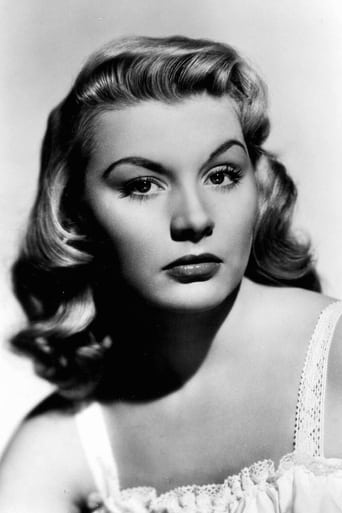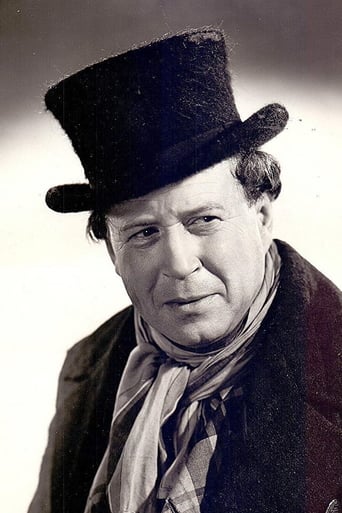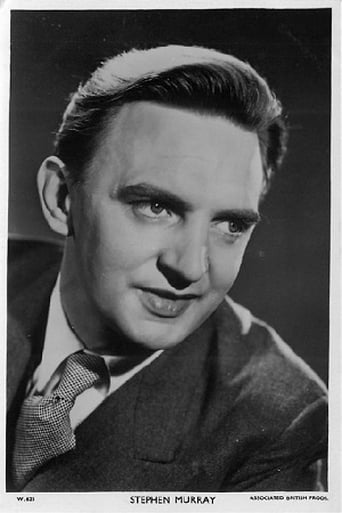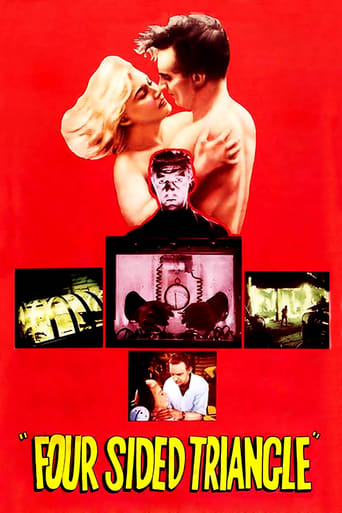
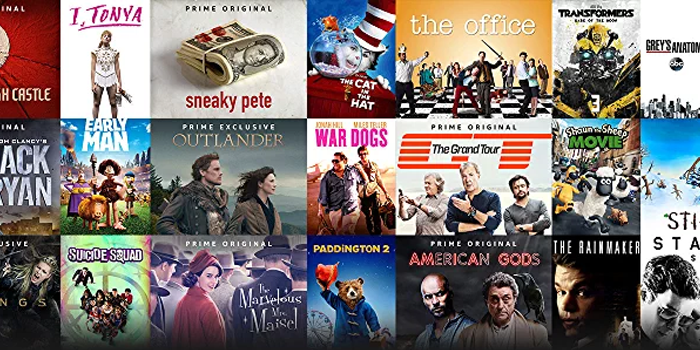
Four Sided Triangle (1953)
A young man, in love with a woman who can never be his, discovers a way to fulfil his dreams. In their childhood the three were the best of friends, the perfect triangle. But years later when Lena returns to her sleepy home the tone of the relationship changes and it is Robin she loves. Bill has discovered a method of duplication and decides to make an exact replica of the woman he cannot have... .with disastrous consequences for them all.
Watch Trailer
Cast


Reviews
Terence Fisher's «Four Sided Triangle» concludes in a conciliatory fashion, after order has been temporarily altered by human forces, with the complete extermination of the man who attempted to change social order and the odd monstrosity that he created. It is not a surprising reactionary ending to a story told by the doctor of Howdean, a township ruled by the Grant manor for fifteen generations. On the contrary, it is an early, consistent ending from Hammer Film, a company that would later specialize in social, sexual and cultural confrontations of British mores. It fittingly starts and ends in a moralist tone, respectively quoting the Ecclesiastes and Ralph Waldo Emerson's texts about God, uprightness, joy, power and man's inventions. As the William F. Temple novel on which it is based, this screen adaptation is also narrated by the town's physician Dr. Harvey who tells the story of three friends he knows since they were kids, who form a love triangle as grownups: Robin Grant is the squire's sole heir ("solid, dependable and conscientious", according to the doctor, played by 31-year old John van Eyssen), poor Bill Leggett is the only child of the village's drunkard ("wild and impetuous" but a "prodigy", played by Stephen Murray, 41), and Lena Maitland is apparently the daughter of an American woman (the "queen of Bill's dreams", played by American actress Barbara Payton, 26). The two men have become "brilliant scientist" who have created a machine that duplicates everything (including humans), and Lena has returned from America after failed attempts to become an artist of any sort. The woman eventually marries the rich heir, to the despair of lovesick Bill who, in turn, creates Helen, Lena's duplicate, to compensate his urges, with tragic consequences for him and the clone who, as a perfect copy of the original, also loves Robin. Simply put, this is a tale of the fittest, the richest and the youngest, sanctified by the Bible and Emerson. To be fair Fisher does quite well with this oddity, making it melodramatic and scary at turns, and look attractive in spite of its low budget. Fisher and Paul Tabori took a lot of screen time to elaborate the love aspects of the story, leaving little space to the Frankenstein tale. Four years later, as we all know, Fisher would dedicate a whole film to that story with better results and obtain celebrity (along with Peter Cushing and Christopher Lee) with "The Curse of Frankenstein".
*Spoiler/plot- Four sided triangle, 1953. Bill and Robin, helped by their childhood gal friend, Lena, develop a "reproducer" machine invention which can exactly duplicate any object.*Special Stars- Barbara Peyton, James Hayter, Stephan Murray, John Van Eyssen. *Theme- Human emotions maybe can have bad consequences between work mates.*Trivia/location/goofs- B & W, British, Hammer films.*Emotion- Less of a solid science fiction story and more of a human emotion melodrama between three kids that grow up to a troubled adulthood. In adulthood they get emotionally involved that leads to destructive actions between them around their new invention. *Based On- 50's science fiction stories with human emotional twist.
I watched a DVD extra included with the film FRANKENSTEIN CREATED WOMAN. It was entitled "The World of Hammer: The Curse of Frankenstein (#1.10)" and I was surprised to hear that before the Peter Cushing Frankenstein films were made, Hammer had actually made another Frankenstein film (FOUR SIDED TRIANGLE). However, after seeing this film, I can say that this 1994 TV program was way overstating things! While the film did precede the Cushing films and it was directed and co-written by Terence Fisher, it most certainly was NOT a Frankenstein film. While there were a few minor similarities, that is all. Actually, I am glad it isn't one of these films, as FOUR SIDED TRIANGLE is a good film in and of itself.The film is told in an interesting manner through narration and flashbacks by one of the minor characters--the guardian of the man who creates a woman later in the film. What is really unusual is that at the beginning, this narrator actually addresses the camera like he's talking to us directly. He reminisces about three children he knew years ago. As they grew, he took great interest in them. And, when one was left an orphan, he took him in and raised him.Most of the story is about the period in the three lives when they are adults. The two men (Robin and Bill) have just returned from Cambridge where they worked on scientific degrees. The girl (Lena) was their childhood chum and she just returned to the UK. The three work together on some strange experiments--experiments that could duplicate matter! When they finally get it to work, they can duplicate watches, gold, anything! However, while this should be a very happy time for Bill, it isn't because at the time the experiment is unveiled, Robin and Lena announce they are going to be married--leaving the smitten Bill out of luck.Here is where a passing similarity to Frankenstein comes into it. Bill works feverishly with the machine to make it possible to duplicate living things. At first, it is a failure. But, when he's able to perfect the device, he asks Lena if she will allow herself to be copied--thereby allowing him to marry a duplicate Lena and everyone will live happily ever after. Unfortunately, things don't work out as planned and you'll have to tune in to see for yourself. However, understand that it is NOT a horror film but more a film about ethics and romance.Overall, a truly fascinating tale that is improved by great acting, writing and direction. This film is very well made and is frankly better than most of Hammer's films, so comparing it to the Frankenstein franchise does it a bit of a disservice.By the way, the documentary I mentioned above is included on the DVD as well as in FRANKENSTEIN CREATED WOMAN. I can't see why they included this inaccurate TV show with FOUR SIDED TRIANGLE.
OK, I admit that there are some aspects of this film that are actually pretty good. The male actors are likable and charming (if maybe somewhat mannered and "stagey" in their performances). Barbara Payton is reasonably hot and is a much better actress than, say, Mamie Van Doren. Some of the photography and lighting and sets are really good. And the central plot idea has some resonance...who can't identify with the wish to recapture the love that got away? Unfortunately, the screenplay's structure is a mess (beware of any film that opens up with this kind of portentous narration). And it also requires that the characters act like morons. You can get away with characters this dense and unreflective if you are doing a satire. Robert Sheckley or R.A. Lafferty would have done wonderful things with this material. But "4ST" plays things completely straight...and takes 20 minutes too long to get to the good parts.I think this is one of those cases where the material just got away from the director and wouldn't pull together no matter what they did in editing and post-production. Or maybe the director (who went on to do many of Hammer's best regarded films) just needed a lurid horror element in his films to distract the audience from his weaknesses with more straight forward dramatic material. It may be that once he had Dracula to play with, he was working with material more suited to his strengths as a director.I gave this one an extra star because I am sure that audiences back then (with 50 years less movie watching backlog) probably enjoyed this more than I did, and it is too well made to be ranked with 3 star-and-below AIP and Roger Corman dumps from the same era. After all, even mediocre British movies of that period have a certain dignity and craftsmanship that exploitation and genre directors could never hope to get.


